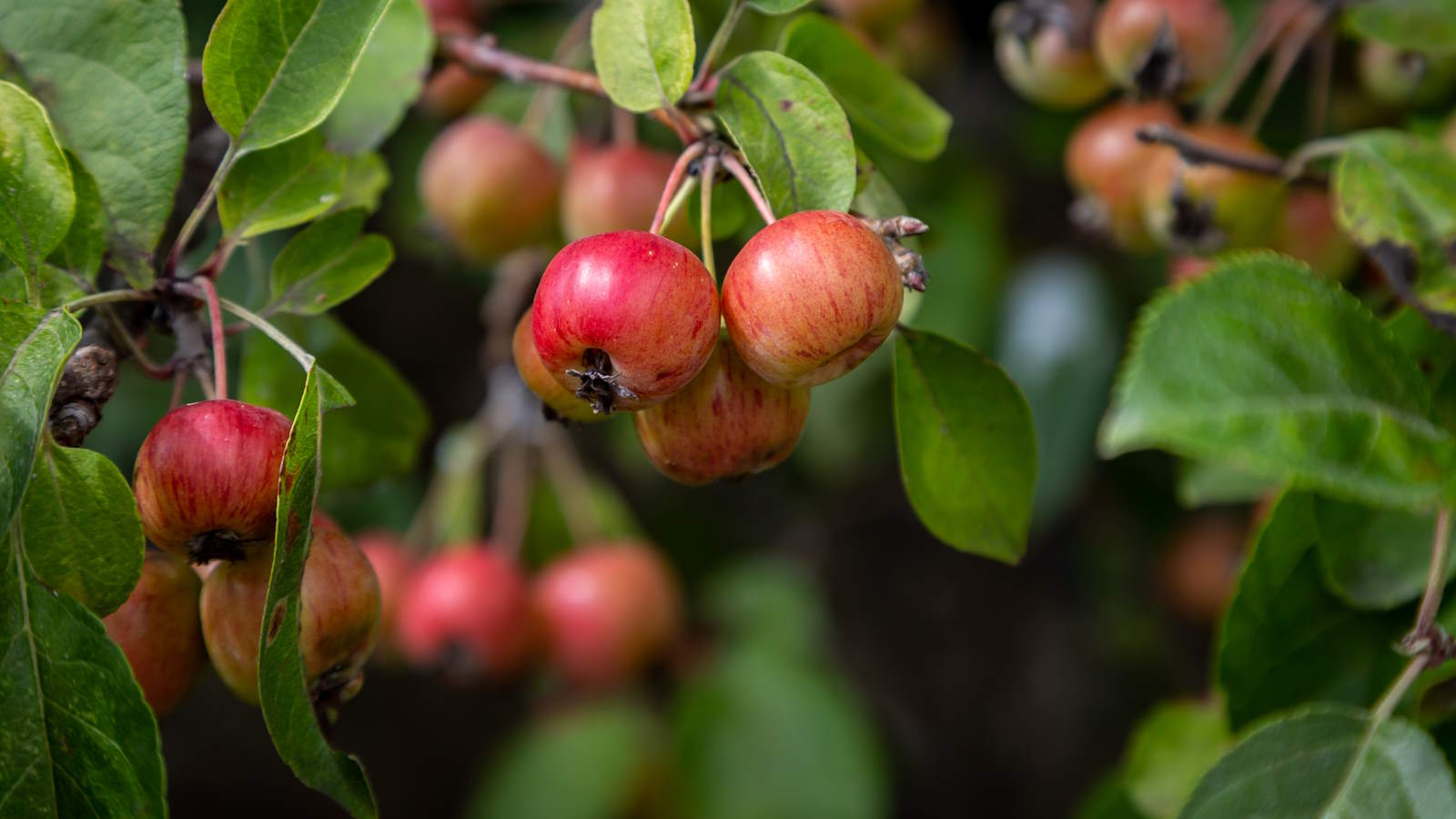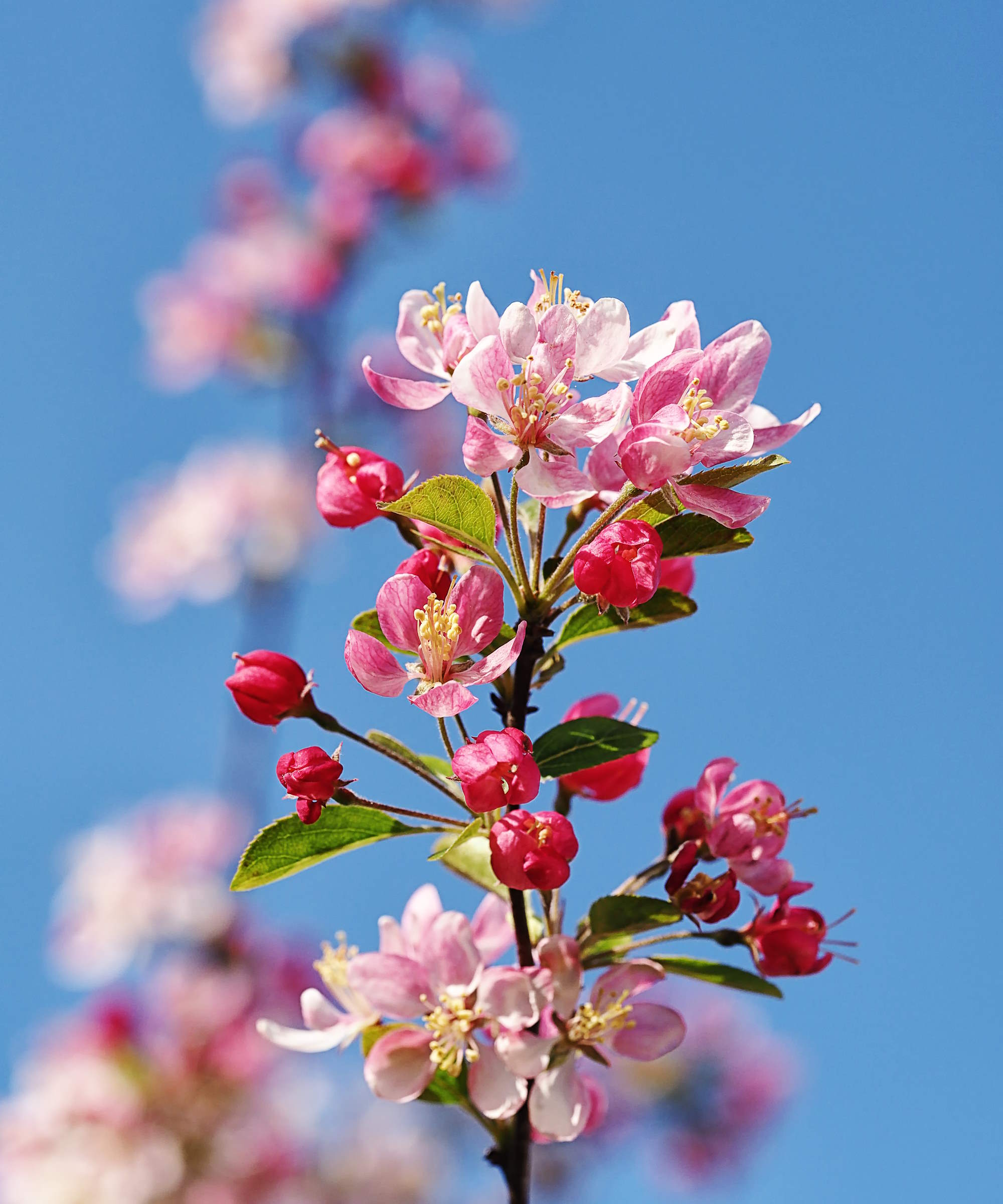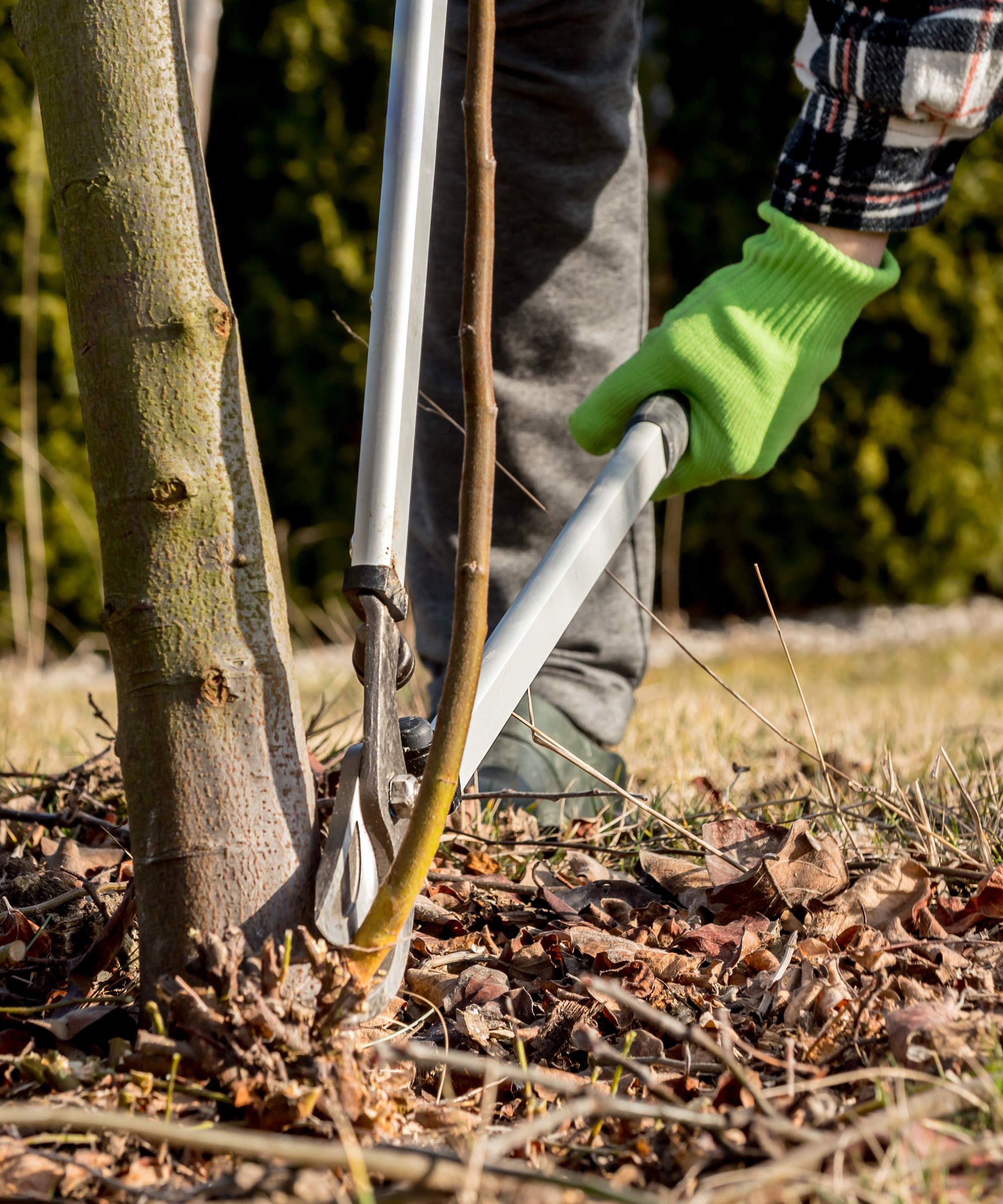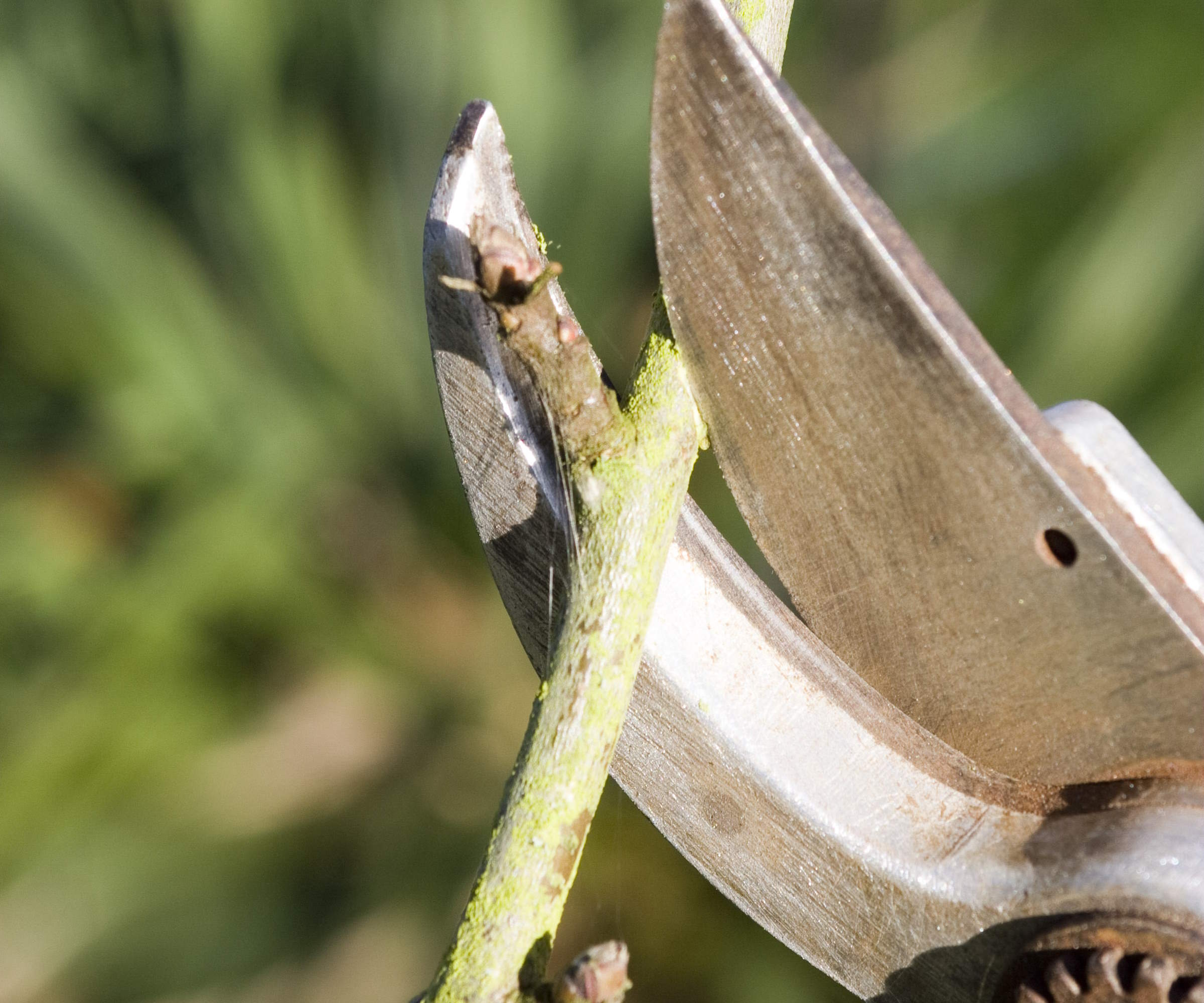Discover how to prune crabapple trees of all ages – whether free-standing or trained trees
Pruning is an important way to maintain the size, shape, and health of a crabapple tree


Crabapple trees are versatile, and very often low maintenance, trees that do not always require lots of large-scale pruning to put on a beautiful display of blossom and fruits year-after-year.
There will be times when crabapple trees will benefit from some pruning. Mostly this will be light trimming to remove diseased or damaged branches and gently shape the tree to keep it looking good and fitting in with the rest of your backyard.
That is when knowing both how and when to prune crabapple trees correctly comes to the fore. Pruning at the right time of year, along with knowing the right branches to cut and the best tools to use, are all important to upkeep the look and health of any crabapple tree.

Pruning crabapple trees can help ensure strong fruiting
Crabapple pruning - how to get the timing right
The best time to prune crabapples is when they are dormant in late winter or early spring. This often means you can prune from late in January through to early April, depending on your US hardiness zone. It is important to wait until the worst of winter has passed and not make the pruning mistake of trimming ahead of a very cold period.
Crabapples may be very low maintenance trees for a backyard. However, if you are planning to trim your crabapples, we get some pruning tips from plant experts to help you complete the task correctly.

Pruning crabapple trees in the harshest winter conditions is inadvisable
How to prune a crabapple tree - expert tips
Pruning a crabapple tree should only require the use of simple garden tools. This will include pruning shears, loppers, a pruning saw, and potentially a pole pruner for high branches. A sturdy ladder, for example a tripod ladder like this Fiberglass Tripod Ladder available at Amazon, will also be required to reach into the tree’s canopy as required. Any tools you use need to be clean and sharp, so they make clean cuts and prevent diseases being spread between plants.
How to trim an established crabapple tree

Crabapple trees have a sweet-smelling blossom in spring
Pruning crabapple trees is a relatively simple process and should not involve removing lots of branches. You should follow the one-third pruning rule and not remove any more than one-third of the tree’s branches when pruning.
Design expertise in your inbox – from inspiring decorating ideas and beautiful celebrity homes to practical gardening advice and shopping round-ups.
The main focus when pruning crabapples is to preserve the health of the tree, along with maintaining the desired shape, size, and structure. Take your time when pruning and regularly step back to look and assess the tree - do not rush when making cuts.
Amy Enfield, Senior Horticulturist at ScottsMiracle-Gro, outlines a four-step plan to help you decide what to remove when pruning a crabapple tree:
- First, remove any suckers growing around the base of the tree
- Then, remove any water sprouts, which are very vigorously growing branches that either emerge from the trunk or grow straight up from one of the larger branches
- Next, prune out any branches that are diseased, dead, or damaged. Make your cuts as close to the main branch, or healthy wood as possible, taking care not to damage the branch collar
- Finally, prune to open up the canopy, look for crossing or rubbing branches and branches that grow in towards the center of the tree instead of outward. Opening up the crabapple tree’s canopy allows for better air circulation which reduces the risk of fungal disease
When it comes to how to prune tree branches, it is important to make your cuts at the right spot. They want to be as close to the main branches as possible, without causing any damage to the branch collar itself. Leave too long a stub and this can cause dieback, and a cut or tear on the branch collar itself can allow potential disease to get into the trunk of the tree.
If you need to remove large branches, best practice is to remove it in sections. Make a small cut on the underside about a third of the way along, before pruning from above further along to drop the branch. Then you can simply remove the remaining section close to the branch collar - this avoids tearing the bark on the trunk by trying to remove too large a branch.

Amy has over 25 years of experience in the Lawn & Garden industry and has been with ScottsMiracle-Gro for 11 years. She has a BS and MS in Horticulture from Michigan State University and a PhD in Plant & Environmental Sciences from Clemson University.
How to prune a young crabapple tree

Prune suckers from the base of a crabapple tree
Formative pruning of a young crabapple tree is beneficial to helping create an open shape to allow light and air into the canopy. The exact methods may depend on the size and shape of the tree you purchased from a nursery, garden center, or online.
To create a standard tree, for the first two years you want to remove all side branches from the lower third annually and shorten any side shoots by a half. Always cut to outward facing buds as this will prompt the direction that the new growth goes in.
Each year you want to remove any crossing branches from the canopy, along with any that go in unwanted directions and dead, damaged, or diseased wood. From the tree’s fourth year onwards, you can then follow the guidelines above for pruning.
How to prune trained crabapple trees

Cut to an outward-facing bud when pruning crabapple trees
Crabapples can be grown in trained form, for example as cordon, fan, or espalier trees. Annual pruning when they are young and developing will form the shape. The exact trimming technique may depend whether you are starting from scratch or have got a pre-trained crabapple. For example, you can get a pre-trained tree, such as this Sargent Crabapple Espalier Tree at Nature Hills.
See below for a general guide of establishing trained crabapple trees:
- Espalier crabapple trees: After planting, trim the stem to above the first wire or support the espalier is being trained too. The next year, trim the central stem above the next wire, tie two horizontal branches in place and remove any other branches that are growing from the stem. Each year onwards you repeat the above until the espalier reaches the desired height. Then it is the case of pruning each winter and summer as with pruning espalier apple trees. The winter trim removes dead, damaged, and diseased wood, along with shaping the tree, while the summer prune lets light and air in to ripen fruit
- Cordon crabapple trees: The first trim after planting will be to cut all side shoots to four inches and trim back the leading stem by a half. It is then a case of cutting back existing side-shoots to around 1-2 inches each summer and trimming any new stems back to three leaves
- Fan crabapple trees: If you are planting a young tree with no branches, then cut back the main stem at the time of planting and then reduce any arms by a half to an outward facing bud the following spring. Continue to remove a third of any new growth each spring until you get a framework of 8-10 well-spaced branches. On an established fan, prune new shoots to three leaves and existing shoots to one leaf each, as well as removing congested branches each winter
FAQs
Can you hard prune crabapple trees?
It is not recommended to ever remove more than a third of branches from a crabapple. Lindsey Hyland, from Urban Organic Yield, says that showing restraint and not trimming more than a third will ‘avoid stressing the tree’. She adds: ‘This approach helps maintain the tree's structure, ensures sufficient leaf cover for photosynthesis, and reduces stress on the tree.’
Heavy pruning of crabapples has the potential to cause many issues for the tree. As well as causing unpredictable recovery and regrowth from hard pruning, cutting out lots of material will have an impact on the tree’s flowering in spring and have affects its overall health going forward.

Lindsey Hyland is the founder of Urban Organic Yield. She grew up in Arizona and attended the University of Arizona’s Controlled Environment Agriculture. From outdoor food gardens to container planting, to aquaculture and hydroponics, Lindsey is an expert in a range of topics and is passionate about teaching you the basics in gardening.
Whether you have backyard or front yard trees, knowing when to prune trees is vitally important for the continual beauty and health of any trees year-after-year. There are different times of year to prune both deciduous and evergreen trees and cutting at the wrong time can potentially affect their lifespan. Always do some research before heading out with the tools to trim.

Drew has worked as a writer since 2008 and was also a professional gardener for many years. As a trained horticulturist, he worked in prestigious historic gardens, including Hanbury Hall and the world-famous Hidcote Manor Garden. He also spent time as a specialist kitchen gardener at Soho Farmhouse and Netherby Hall, where he grew vegetables, fruit, herbs, and cut flowers for restaurants. Drew has written for numerous print and online publications and is an allotment holder and garden blogger. He is shortlisted for the Digital Gardening Writer of the Year at the 2025 Garden Media Guild Awards.
